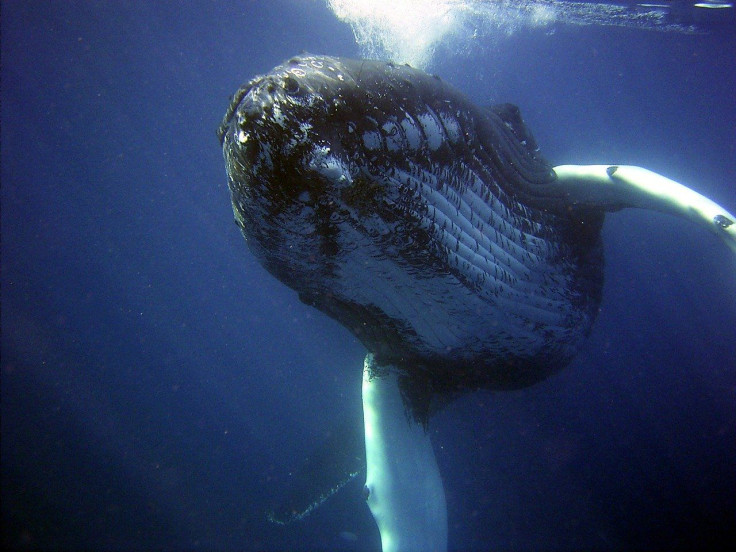How Massive Whales Use Stealth To Feed On Prey?
KEY POINTS
- To feed, humpback whales use a process called lunge-feeding where they take in large volumes of water and filter their food through their baleen plates
- The fish that humpback whales eat can quickly disperse the moment they sense a threat
- Researchers of a new study found that this escape response is trigerred the moment the whale opens its mouth
- To avoid the escape response, humpback whales stealthily wait for the perfect time before opening their mouths
Massive creatures such as humpback whales aren’t exactly known for their speed. So, how do they manage to forage enough fish to sustain themselves when their prey can just easily and quickly disperse the moment they sense a threat?
Researchers of a new study published in the Proceedings of the National Academy of Sciences sought to find out by combining mathematical modeling, laboratory experiments, and field studies.
Lunge Feeding
Humpback whales are baleen whales, which means that to feed, they take in a large volume of water then filter the excess water out to strain their catch through their baleen plates before swallowing. This process is called lunge-feeding, and humpback whales are quite effective at it despite their massive size and slow speed.
To understand how massive humpback whales do it without spooking their prey, researchers from Stanford University conducted laboratory experiments to see how anchovies would react to a virtual whale based on recordings of actual whale-mounted video tags in Monterey Bay and Southern California. From the results, the researchers then calculated how many fish would actually be able to escape based on their reaction times.
Whale Stealth
Interestingly, the researchers found that fish escape response to the whale actually comes at the moment when the whale opens its mouth, leaving the whales with little time once they open their mouths. This suggests that the reason why whales are so effective at foraging for prey is that they precisely time their engulfment when they are already very close to the school of fish so as to avoid triggering early escape responses.
In other words, the whales compensate for their speed and size by stealthily waiting for the perfect time before opening their mouths.
On the other hand, the researchers did not observe the same delays when the whales are pursuing krill, possibly because krill are already less responsive to predators.
Fish Evolution
According to the researchers, their findings also suggest that fish response to single-prey predators, which they evolved millions of years before the development of lunge-feeding, is not sufficiently tuned to respond to predators that can eat whole schools of fish.
“This made sense when we realized that fish have been evolving to avoid being eaten by smaller predators for at least 100 million years, but lunge-feeding is a relatively new feeding strategy, evolutionarily speaking,” study first author David E. Cade of Stanford University said.

© Copyright IBTimes 2024. All rights reserved.












